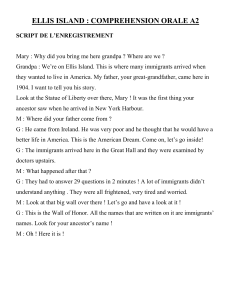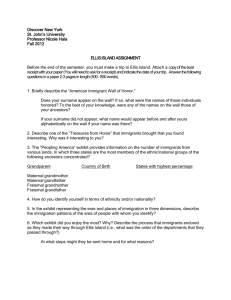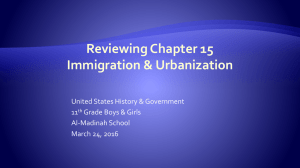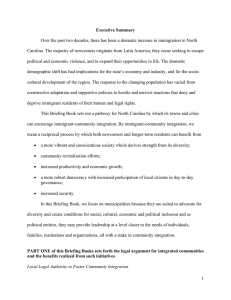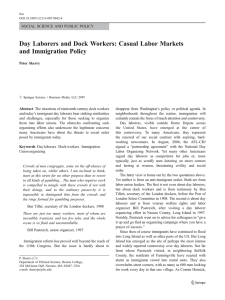Document
advertisement
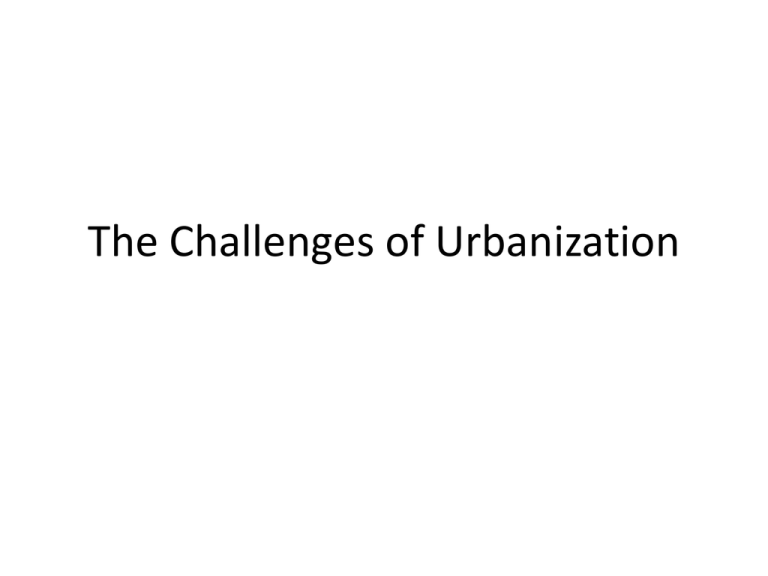
The Challenges of Urbanization THE STORY TO DATE… Remember all the changes after the Civil War… • Reconstruction in the South • Manifest Destiny (westward expansion) – Mexican-American War gained land from Mexico – Native Americans removed from the land following bloody battles and moved to reservations • Rapid rise of industrialization caused growth of cities – New inventions (light bulb, telephone, Bessemer process) – Transcontinental railroad – Robber barons (Carnegie, Rockefeller) Immigration • Large number of immigrants – Through Ellis Island in New York – Through Angel Island in San Francisco • 20 million Europeans between 1870 and 1920 • 200,000 Chinese between 1870 and 1920 • Reasons included – Poverty in home lands – Opportunities – Freedom Growth of Urban Population • Inventions and technological advance allowed cities to grow – Factories – Skyscrapers • Immigration – Most moved to the cities, expanding population – From 10 million to 54 million between 1870 and 1920 This is the topic of this section… The Challenges of Urbanization BIG IDEA – The rapid growth of cities forced people to deal with problems of housing, sanitation, transportation, jobs, water, and sanitation. Why did immigrants settle in cities? • Cities were the cheapest places to live. • It was closest to where they arrived in the United States – Especially in New York (Ellis Island) • Factories offered many jobs to unskilled laborers How many immigrants? • By 1890, twice as many Irish in New York as in Dublin, Ireland • By 1910, immigrant families made up more than half of population in 18 major American cities The Americanization Movement • Definition: Social movement by government and citizen groups to teach immigrants skills needed for citizenship – English literacy – History – Government – Cooking – Etiquette Immigrant response • Many did not want to abandon their traditions • Ethnic communities developed • Enabled them to speak own language and customs • But quickly got overcrowded Migration from Rural areas • Many moved from rural areas because – Technology reduced number of laborers needed – Escape racial violence in the South – Escape political oppression – To seek better jobs Urban Problems • Housing – lack of available housing led to many families living in tenements • Poor people needed to get around = cities developed mass transit such as subways and street cars • Water – Lack of piping in cities led to little or no running water • Diseases – Too many people in a small space, lack of sanitation, medical care • Sanitation = Garbage on streets, outhouses • Crime • Fires Reform Movements • Social gospel movement – Preached salvation through service to the poor • Settlement houses – Community centers to provide assistance to the poor – Run mainly by middle-class, educated women – Taught courses – Provided medical care • Jane Adams – most famous of the social gospel movement – founded Hull House in Chicago Jacob Riis • • • • An immigrant from Denmark A police reporter, often worked in slums Also a photographer Documented the lives of the poor in tenements • Most famous work: “How the Other Half Lives”


